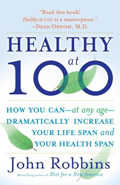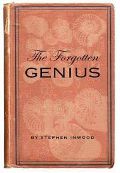Brian K. Kennedy et al. Discover that the Daughter Cells of Old Yeast have Shorter Life-Spans than those of Younger Strains
 Who:Brian K. Kennedy, Nicanor R. Austriaco Jr., Leonard Guarente
Who:Brian K. Kennedy, Nicanor R. Austriaco Jr., Leonard GuarenteWhen:December 01, 1994
Why: To research a cause for aging
Methods: By growing yeast and manipulating away their progeny, then counting how long both the first strain and the progeny lived
Institution: Massachusetts Institute of Technology
Where: Cambridge, Massachusetts, U.S.A
Technology: Microscope, Inucbator, Growth Medium
In 1990 Brian Kennedy and Nick Austriaco started their graduate studies at MIT. They approached Professor Lenny Guarente, and the conversation that followed led Guarente to adopt aging as the major focus of his lab at MIT.2
Guarente studied molecular biology and suggested that they look at aging in yeast, since yeast have a short lifespan and would serve well for molecular experimentation. Yeast lifespan is measured in generations, or the number of times it divides before it expires.
In their 1994 publication Brian, Nick, and Guarente confirmed that the lifespan of yeast haploid strain (PSY142) was 29.1 generations, with a standard deviation of 10.9.
As they grew the yeast to confirm its lifespan they manipulated the yeasts' progeny out of the medium to grow in another medium. They found that progeny from older yeast had shorter lifespans than progeny from younger yeast.
In their 1994 paper on the experiment they write: "The decrease in the life spans in daughters of old mothers is substantial, 7.9 divisions in daughters from mothers in the last 10% of their life spans, as compared to 26.5 divisions for the daughters of mothers in the first 70% of their life span."1
"...we suggest that an intracellular substance accumulates in old mother cells that is generated by a failure to repair macromolecular damage. The identity of this substance and insights into its generation would shed light on the aging process in yeast ceils, and perhaps other eukaryotic cells."1
In other words, something inside the yeast cells is being passed on that suppresses extracellular repair, and thus "causes" aging, or does not repair damage from aging as is seen in younger cells.
References
- Kennedy, B.K., Austriaco, N.R., Jr., and Guarente, L. (1994). Daughter cells of S. cerevisiae from old mothers display a reduced life span. J. Cell Biol., 137 1985-1993
- Guarente, L. Ageless Quest: One Scientists Search for Genes That Prolong Youth New York: Cold Spring Harbor Laboratory Press, 2003.
Links




